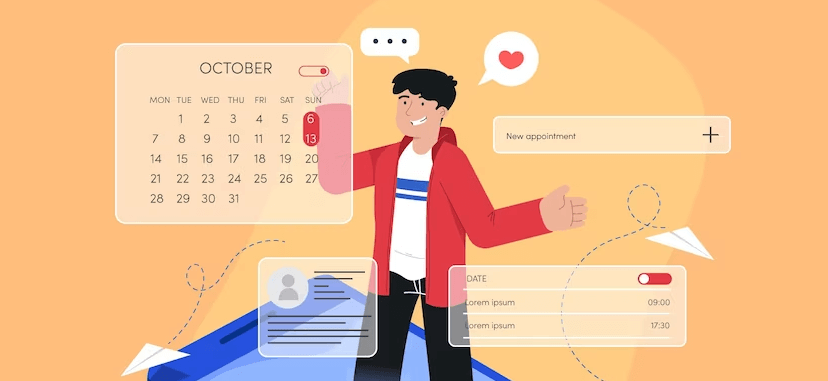
Click the button to start reading
Unlock Your Productivity: The Magic of Time Batching
Welcome to the world of modern work, where the ability to multitask is often celebrated, but the reality is a constant battle with distractions, interruptions, and a nagging sense that you’re not quite as productive as you could be.
Enter time batching, your secret weapon in the war against wasted time. This simple yet powerful technique is all about grouping similar tasks together and dedicating specific time slots to them. It’s like meal prep for your workday: you batch your tasks, and then you feast on productivity.
By the time you’ve finished reading this article, you’ll not only understand what time batching is and why it’s so effective, but you’ll also have a step-by-step guide to implementing it in your own work or life. Plus, you’ll get tips, tools, and real-life examples to help you along the way.
So, if you’ve been feeling like a circus performer spinning plates, only to watch them wobble and crash, don’t worry. We’re about to bring some much-needed clarity to your workday chaos. Let’s dive in, shall we?

What’s Time Batching?
Time batching is a method of managing time that involves combining tasks that are similar and completing them in a single, focused session.
This method creates distinct compartments in your day for different types of tasks. Instead of constantly shifting gears between different tasks, you concentrate on one category at a time. This approach allows your brain to settle into a rhythm, reducing cognitive load and enhancing productivity.
The Science Behind Time Batching
The effectiveness of time batching is rooted in our brain’s functioning. When we switch between tasks, our brain doesn’t immediately follow suit. A part of it still lingers on the previous task, a phenomenon known as attention residue. It’s akin to trying to focus on a new conversation while part of your mind is still processing the previous one. Not the most efficient way to operate, is it?
Time batching helps to minimize this attention residue, allowing your brain to fully immerse itself in one type of task at a time. This can lead to improvements in both productivity and mental wellness. It’s like giving your brain the green light to fully engage in one task without the distraction of pending tasks.
This isn’t just a theory. A study from the University of Michigan found that switching between tasks can cost as much as 40% of someone’s productive time. That’s a significant amount of time that could be saved with time batching.
So, next time you find yourself ping-ponging between tasks, remember the power of time batching. Group those similar tasks together, dedicate specific time slots to them, and watch your productivity take flight. After all, your brain deserves the chance to focus and excel at one task at a time.

Real-Life Time Batching Examples
Ever wondered how some of the most successful people manage their time? Let’s take a peek into their routines. Elon Musk, the CEO of SpaceX and Tesla, breaks his entire day into five-minute slots, each dedicated to a specific task or meeting. This way, he ensures every minute counts.
Authors, like J.K. Rowling, have used time batching while writing their novels. Rowling would dedicate specific hours of her day solely to writing, allowing her to dive deep into the magical world she was creating.
Time batching isn’t just for the famous and successful. It’s a technique that can be applied in any field and at any level. For instance, a teacher might batch their grading, dedicating a specific block of time to grade all assignments. Similarly, a software developer might batch their coding tasks, focusing solely on writing code for a set period of time.
Expanding further, a project manager might batch their time for meetings, setting aside specific blocks of time each day or week for team check-ins, client updates, and strategy sessions.
A graphic designer might batch their creative work, dedicating certain hours of the day to designing when their creativity peaks, leaving administrative tasks or emails for when their creative energy is lower.
A student could use time batching to manage their study schedule, dedicating specific time slots for each subject.
A freelance writer might batch their time for research, writing, editing, and client communication.
A fitness trainer could batch their time for client sessions, program design, and administrative tasks.
In essence, no matter the profession or lifestyle, time batching can be a game-changer. It’s about understanding your work rhythm and harnessing it to work smarter, not harder.
How Time Batching Boosts Productivity
Time batching is like putting your brain on a treadmill instead of making it run an obstacle course. By focusing on one type of task at a time, you reduce the mental strain of constantly switching gears. This leads to a more efficient use of your mental energy and, ultimately, a boost in productivity.
Consider this: When you start a new task, it takes some time for your brain to fully engage with it. This is known as the “ramp-up time.” By reducing the number of times you switch tasks, you also reduce the total ramp-up time. This means you can spend more of your day in that sweet spot of full engagement, where you’re most productive.
Time Batching for Mental Wellness
But the benefits of time batching extend beyond productivity. It’s also a powerful tool for enhancing mental wellness. By reducing the mental chaos of multitasking, time batching can lower stress levels and increase feelings of control over your work.
Think about it: when you’re constantly switching between tasks, it’s easy to feel like you’re always playing catch-up. But when you batch your tasks, you know exactly what you’ll be working on and when. This can bring a sense of calm and order to your workday, making it not just more productive, but also more enjoyable.

How to Use Time Batching
Ready to give time batching a try? Here’s a step-by-step guide to get you started:
- Identify Your Tasks: Start by listing out all the tasks you need to accomplish. This could be for the day, the week, or even the month, depending on what works best for you.
- Group Similar Tasks: Look at your list and start grouping similar tasks together. These groups could be based on the type of work (e.g., creative tasks, administrative tasks), the tools needed (e.g., computer tasks, phone tasks), or any other criteria that make sense for you.
- Schedule Your Batches: Now, assign each group of tasks to a specific time slot in your schedule. Remember, the goal is to focus on one type of task at a time, so make sure each batch has its own dedicated time.
- Eliminate Distractions: When it’s time to work on a batch, eliminate any potential distractions. This could mean turning off notifications, closing unnecessary tabs, or even finding a quiet place to work.
- Take Breaks: Don’t forget to schedule breaks between your batches. This gives your brain a chance to rest and recharge before diving into the next batch.
Tips for Effective Time Batching
Now that you know how to use time batching, here are some tips to make it even more effective:
- Be Realistic: Don’t try to cram too many tasks into one batch. Be realistic about how much you can accomplish in the time you’ve allocated.
- Prioritize: Not all tasks are created equal. Make sure you’re dedicating your most productive hours to your most important tasks.
- Stay Flexible: Life happens, and sometimes your schedule will need to change. That’s okay. The goal of time batching is to help you manage your time better, not to lock you into an inflexible schedule.
- Review and Adjust: Regularly review your schedule and your task groups. Are they still working for you? If not, don’t be afraid to make adjustments.
Remember, time batching is a tool, and like any tool, it works best when you use it in a way that suits you. So feel free to experiment, adjust, and find the approach that helps you be your most productive self.

Tools to Help You Batch Your Time
In the digital age, there’s no shortage of tools to help you manage your time more effectively. Here are a few that can be particularly useful for time batching:
- Digital Calendars: Tools like Google Calendar or Outlook allow you to block out time for your batches. You can even set reminders to help keep you on track.
- Task Management Apps: Apps like Asana, Trello, Teamly, or Todoist let you organize your tasks into lists or boards, making it easy to see what you need to do and when.
- Pomodoro Timers: The Pomodoro Technique involves working for a set amount of time (usually 25 minutes), then taking a short break. Tools like TomatoTimer or Focus Booster can help you implement this technique.
- Distraction Blockers: Apps like Freedom or StayFocusd can block distracting websites or apps during your batch times, helping you stay focused.
Techniques for Effective Time Batching
While the tools can help, the real key to effective time batching is how you use them. Here are some techniques to keep in mind:
- Match Your Energy Levels: Try to schedule your most demanding tasks for when your energy levels are highest. For most people, this is usually in the morning.
- Batch Similar Tasks: The more similar the tasks in a batch, the less mental effort you’ll need to switch between them.
- Limit Interruptions: Try to create an environment where you won’t be easily interrupted during your batch times. This might mean turning off notifications, finding a quiet place to work, or even letting others know not to disturb you.
- Take Breaks: Don’t forget to take regular breaks between your batches. This can help prevent burnout and keep your mind fresh.
Conclusion: Embrace Time Batching for a More Productive and Happier You
Time batching stands as a powerful technique that can elevate your productivity, reduce stress, and enhance the enjoyment of your workday. While it’s not a magic bullet, with thoughtful planning and the right approach, it can make a significant difference.
Remember, the goal isn’t to cram as much work as possible into your day. It’s to work smarter, not harder. By grouping similar tasks together and dedicating specific time slots to them, you can make your workday more manageable and your mind more focused.
















